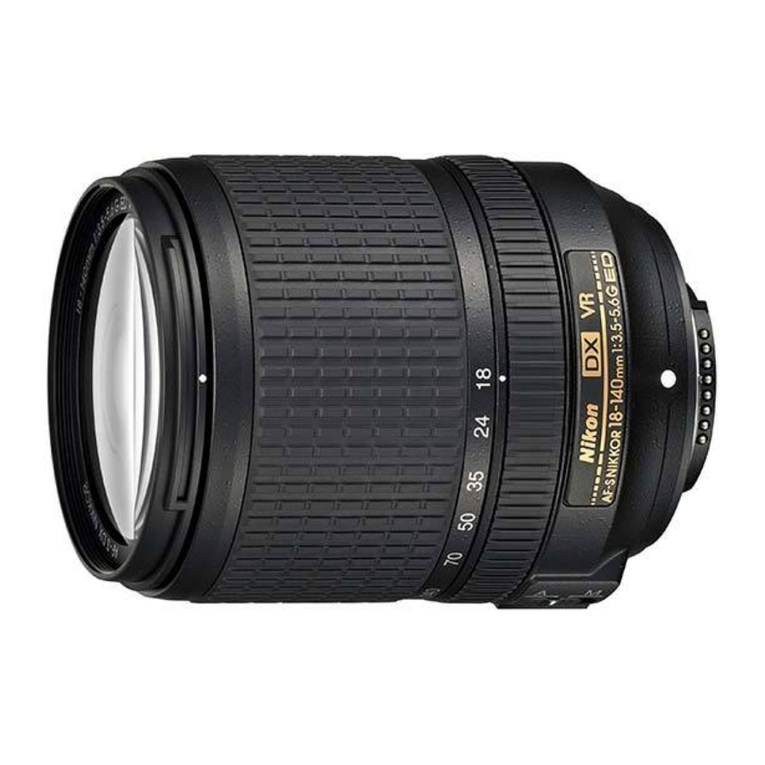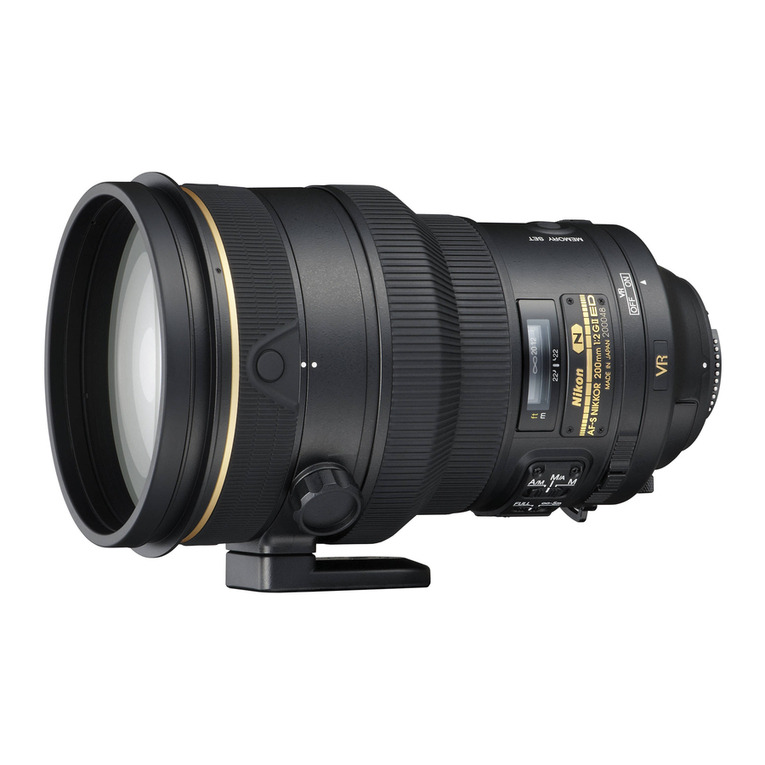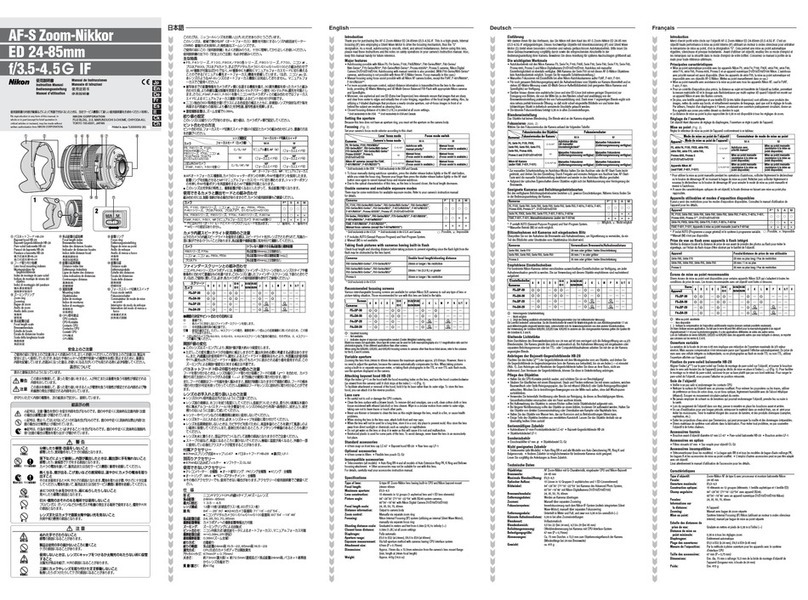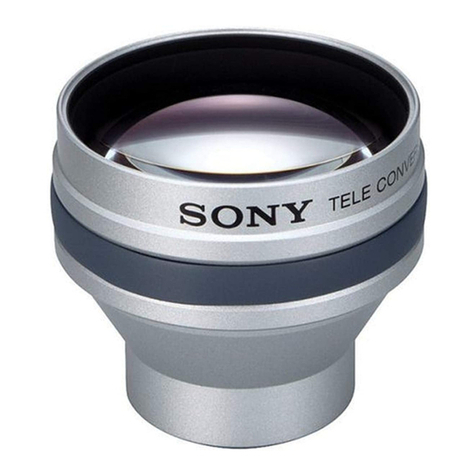Nikon AF-S NIKKOR 300mm f/4E PF ED VR User manual
Other Nikon Camera Lens manuals
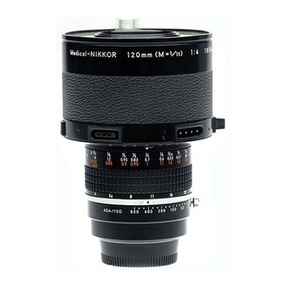
Nikon
Nikon Medical-Nikkor 120mm f/4 IF User manual
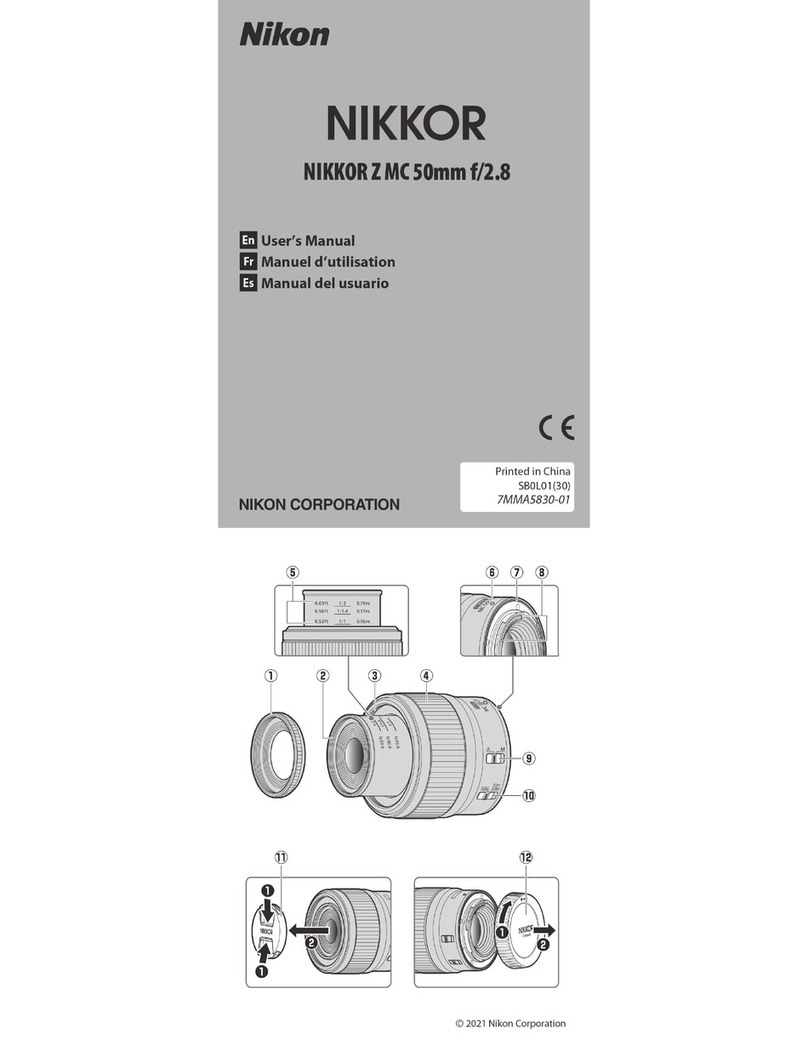
Nikon
Nikon NIKKOR Z MC 50mm f/2.8 User manual
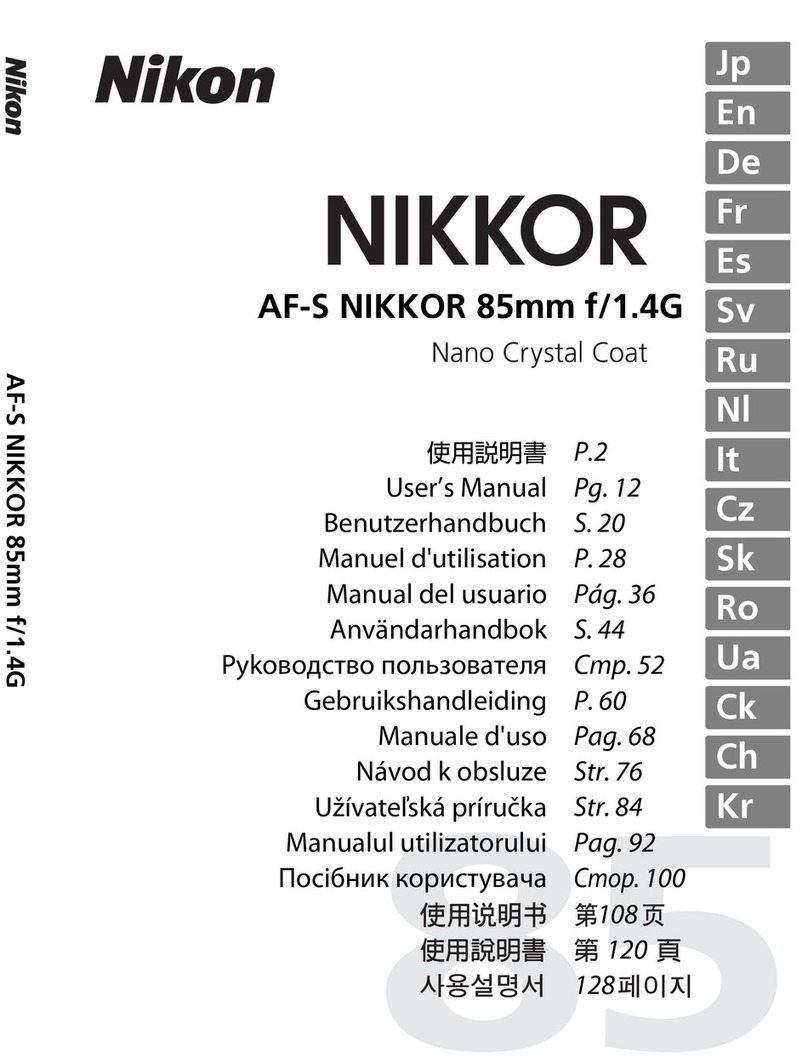
Nikon
Nikon 24mm F/1.4G ED AF-S Nikkor User manual

Nikon
Nikon JAA79551 Operating instructions

Nikon
Nikon NIKKOR Z DX 16-50mm f/3.5-6.3 VR User manual
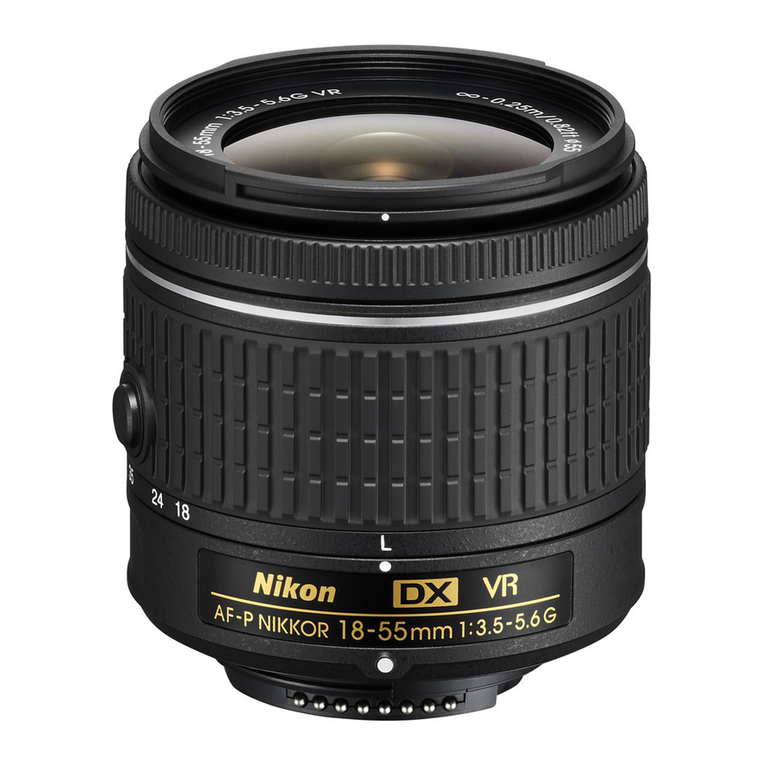
Nikon
Nikon AF-S DX 18-55mm f/3.5-5.6G ED User manual
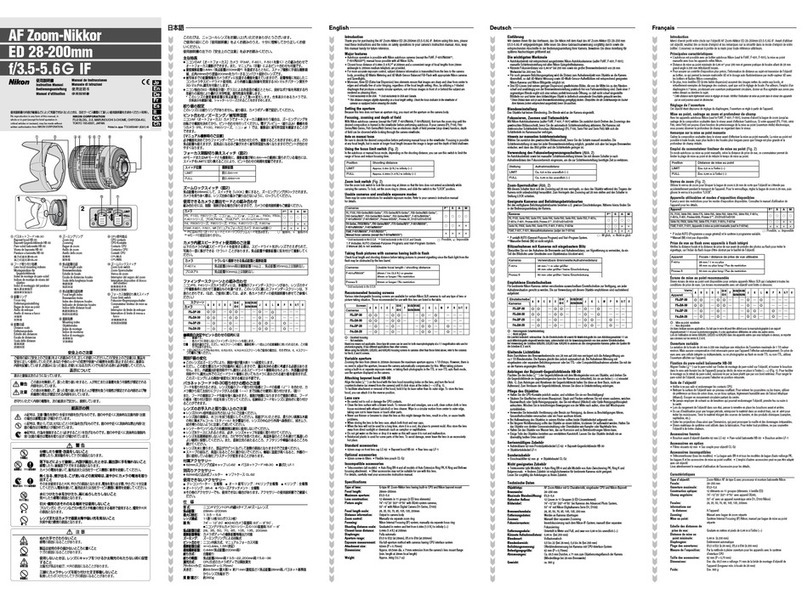
Nikon
Nikon AF Zoom-Nikkor 28-200mm f/3.5-5.6D IF User manual
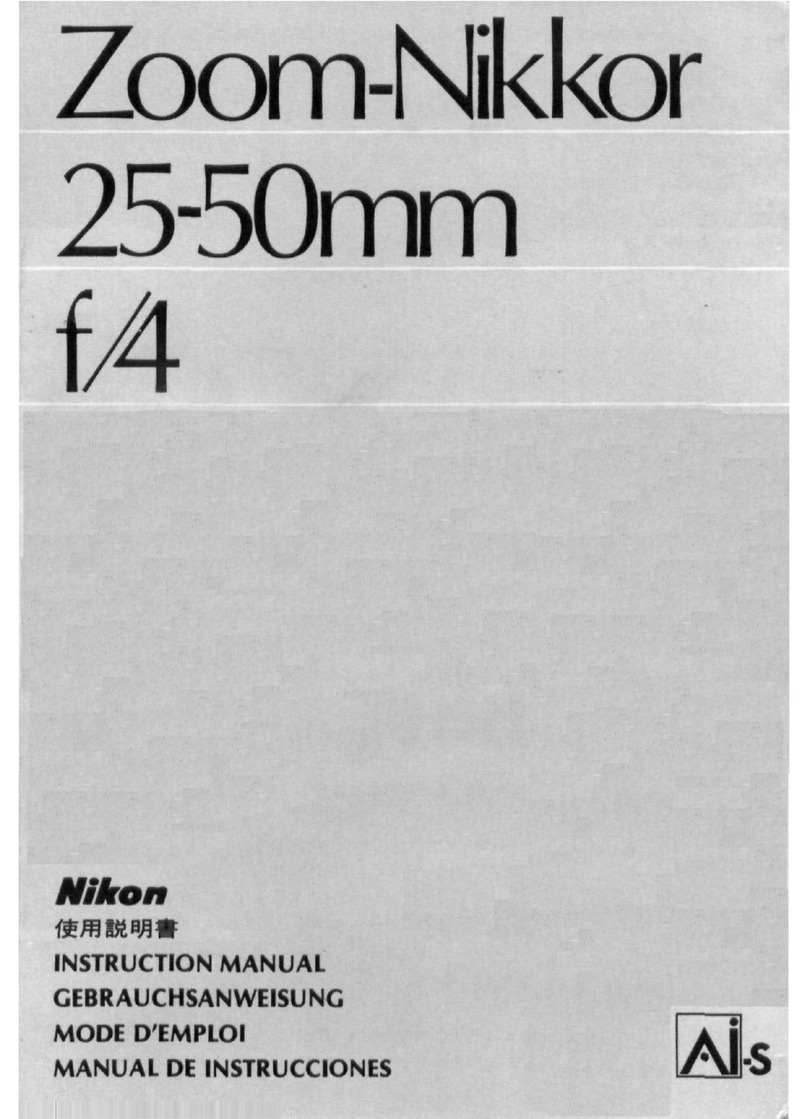
Nikon
Nikon AI-S Zoom-Nikkor 25-50mm f/4 User manual
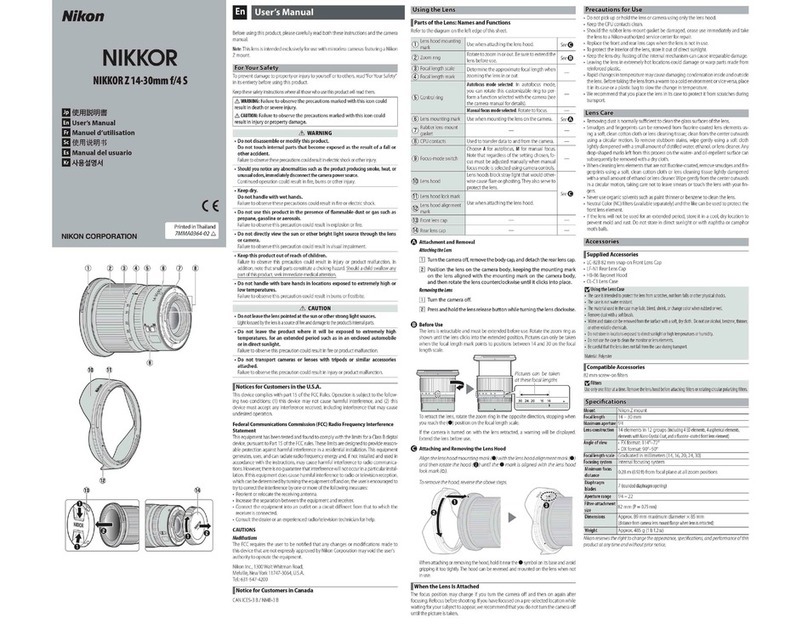
Nikon
Nikon NIKKOR Z 14-30mm f/4 S User manual
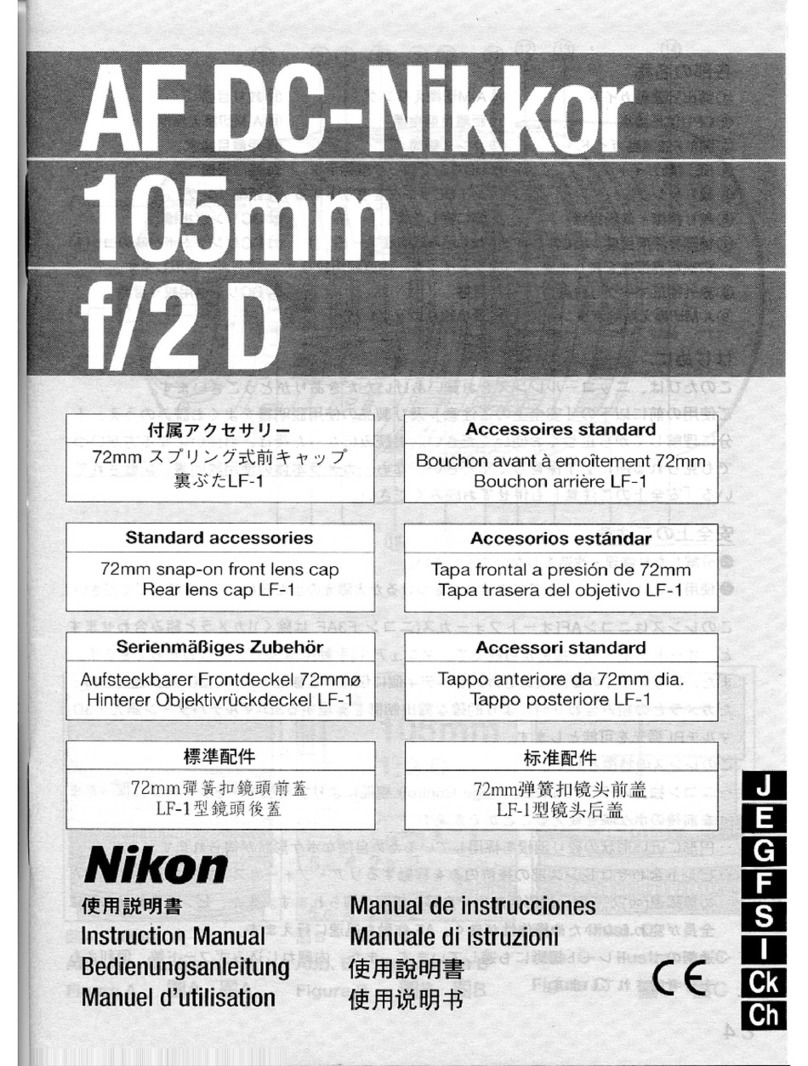
Nikon
Nikon AF DC-Nikkor 105mm f/2 D User manual
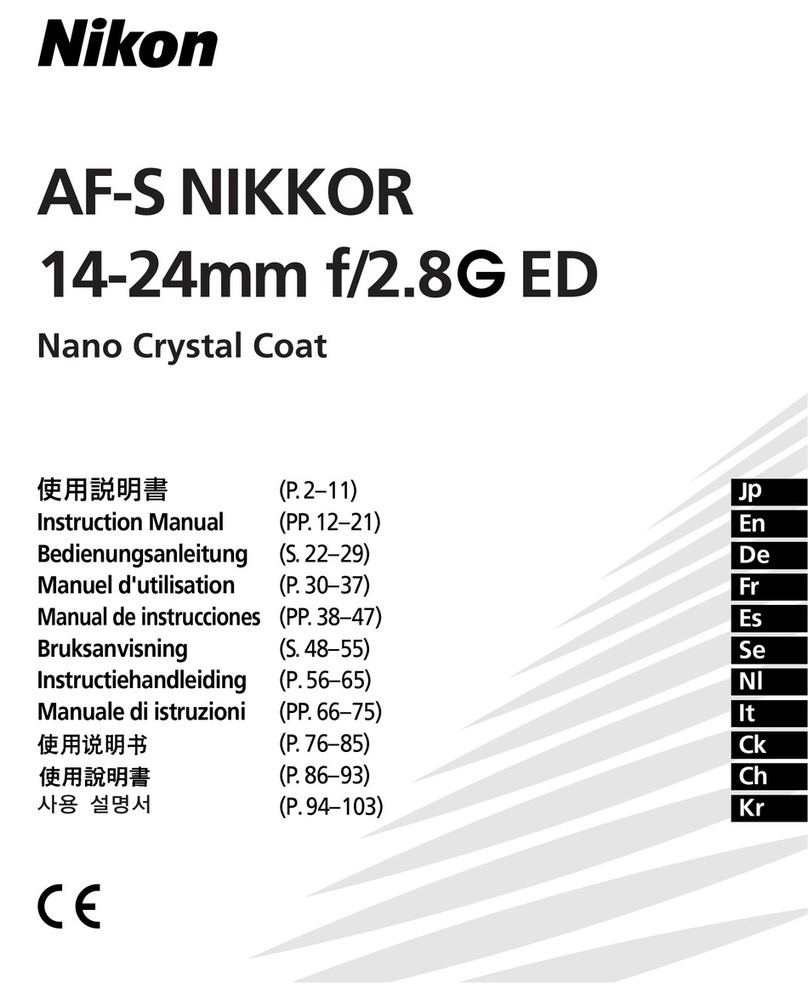
Nikon
Nikon AF-S NIKKOR 14-24mm f/2.8G ED User manual
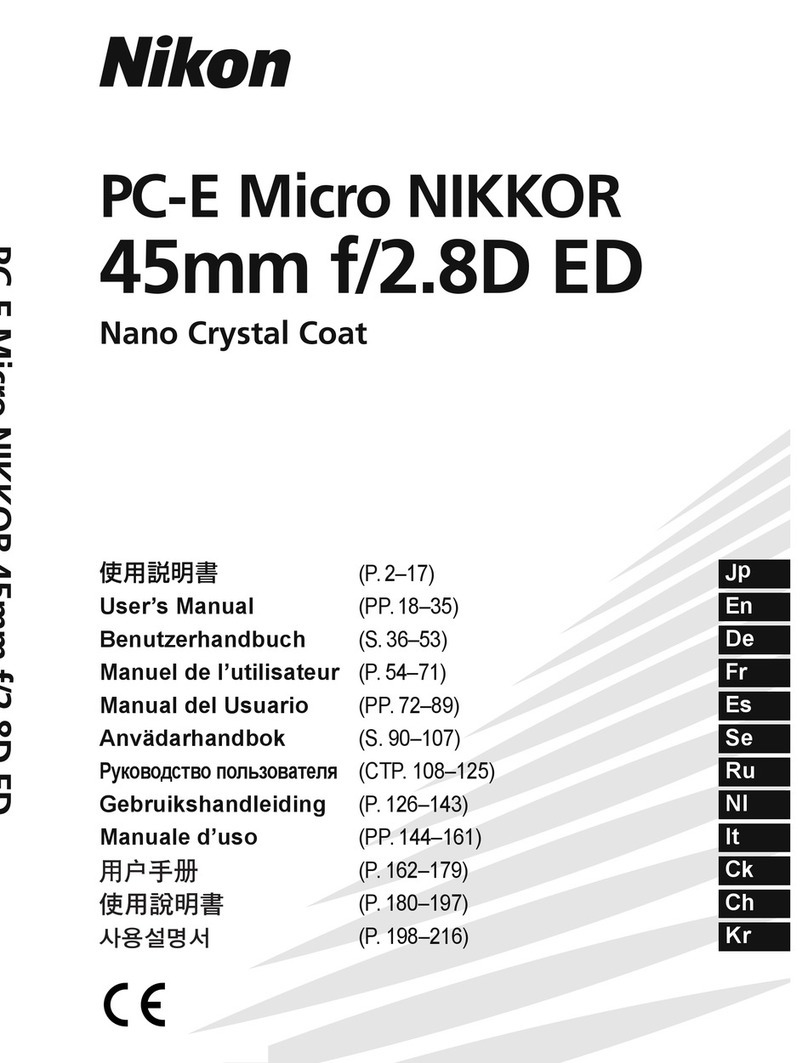
Nikon
Nikon Nikkor 45mm f/2.8P User manual
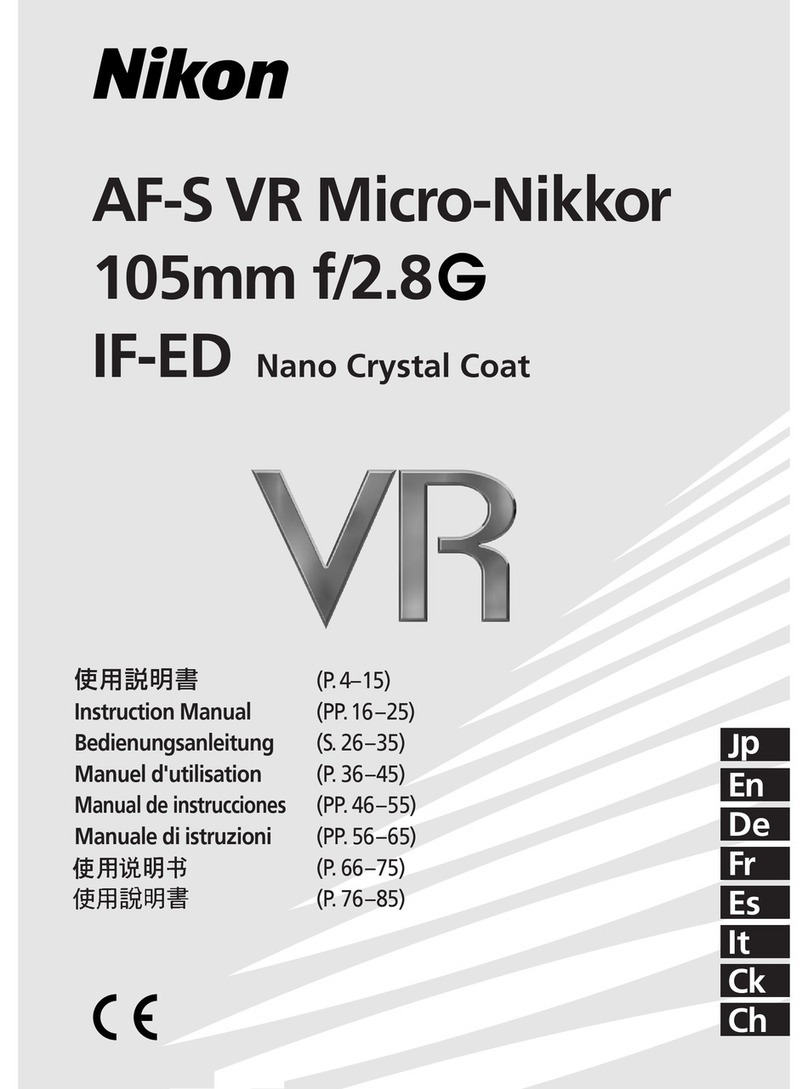
Nikon
Nikon AF-S VR Micro-Nikkor 105mm f/2.8G IF-ED User manual

Nikon
Nikon 1 Nikkor VR 30-110mm f/3.8-5.6 User manual
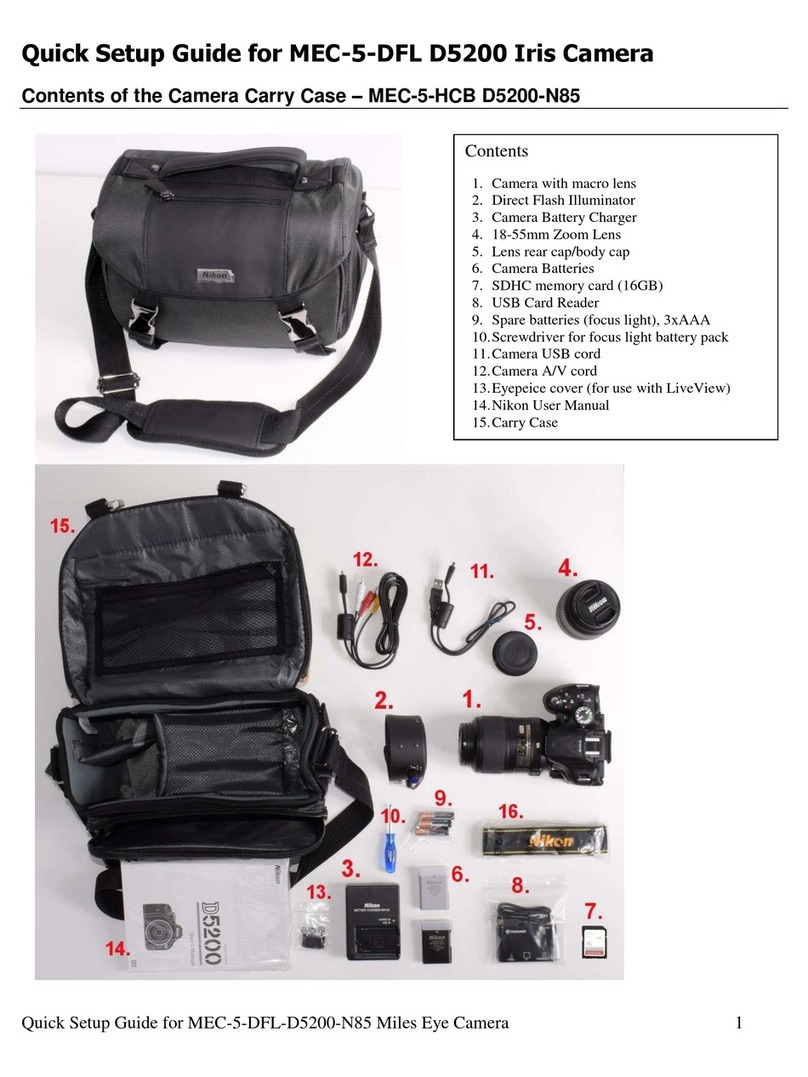
Nikon
Nikon MEC-5-DFL-D5200-N85 User manual
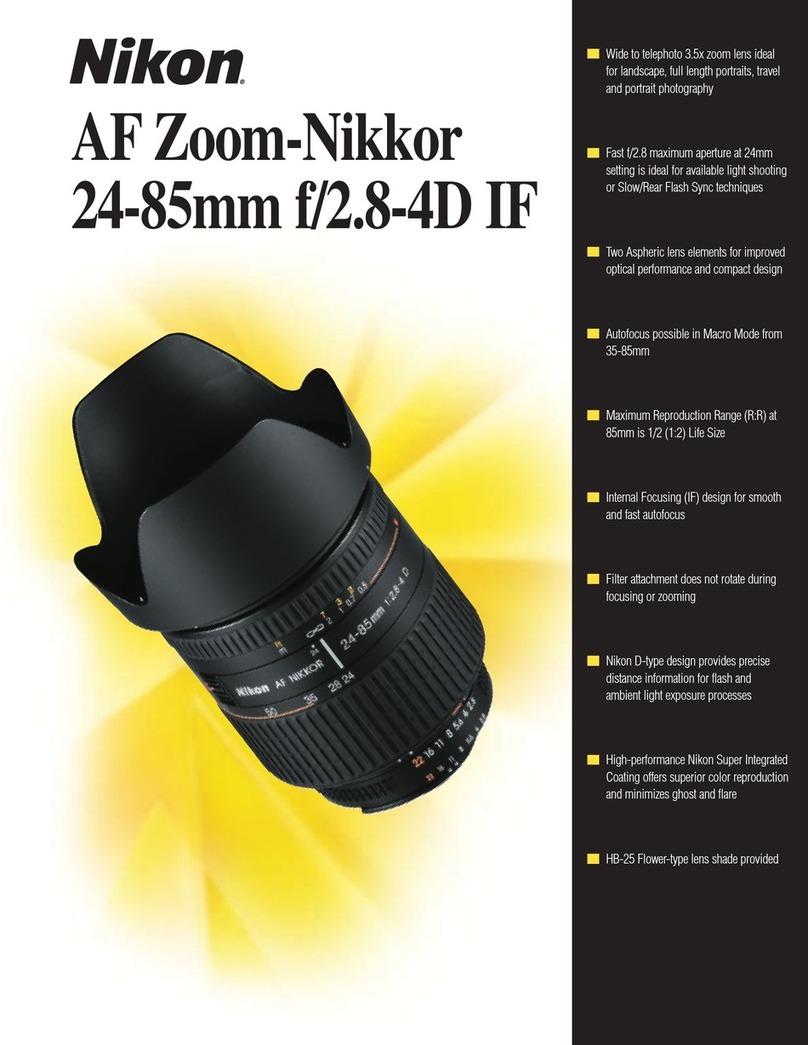
Nikon
Nikon AF Zoom-Nikkor 24-85mm f/2.8-4D IF User manual
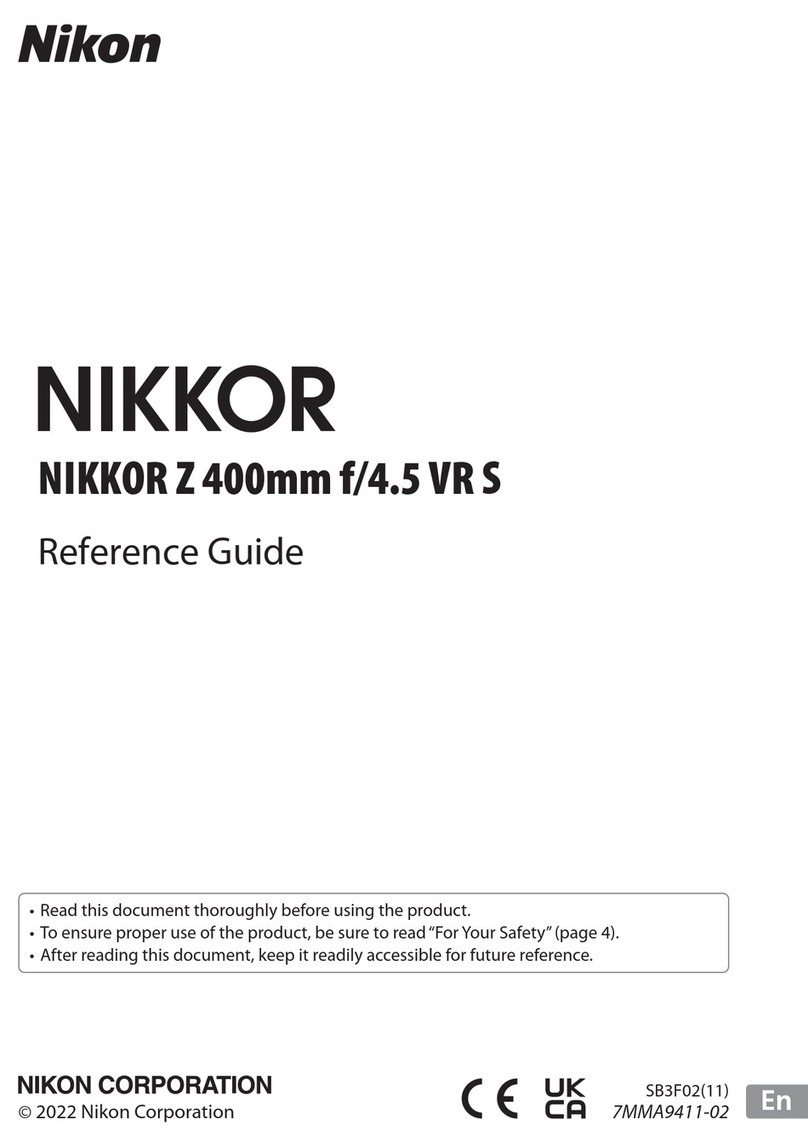
Nikon
Nikon NIKKOR Z 400mm f/4.5 VR S User manual
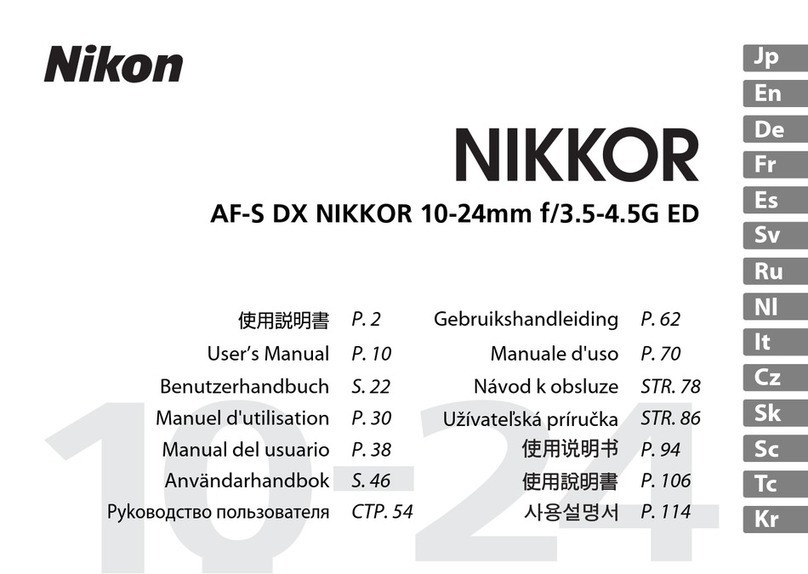
Nikon
Nikon AF-S DX NIKKOR 10-24mm f/3.5-4.5G ED User manual
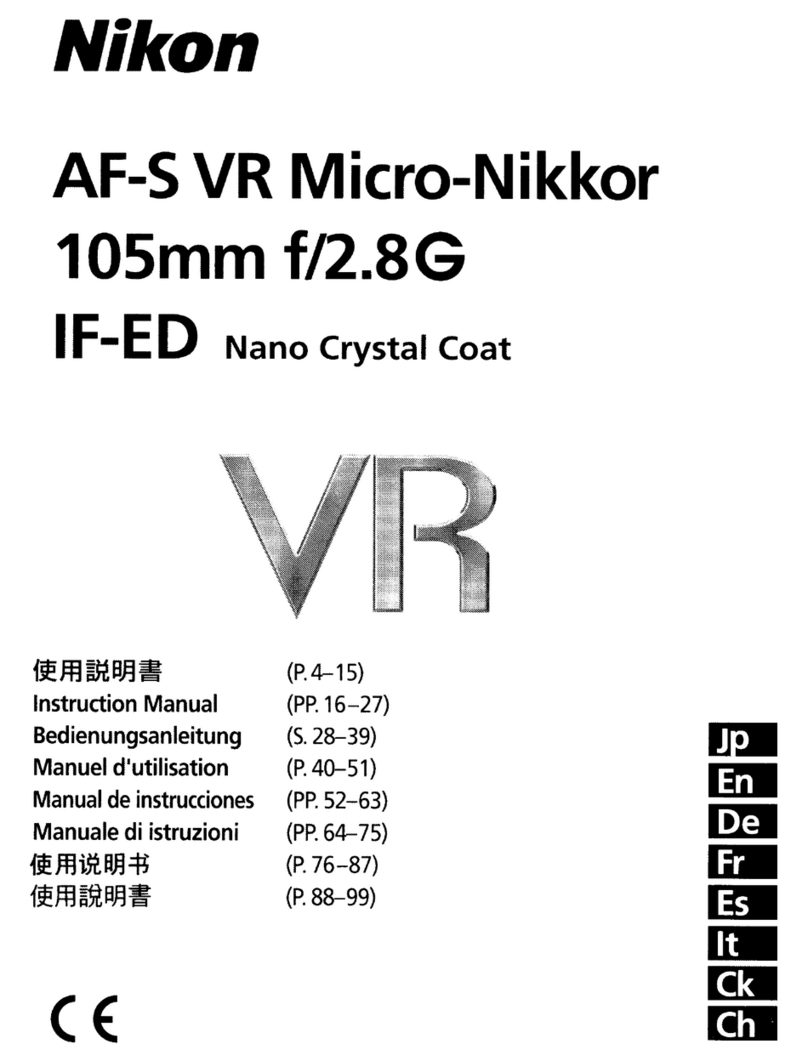
Nikon
Nikon AF-S VR Micro-Nikkor 10Smm fl2.8G IF-ED User manual
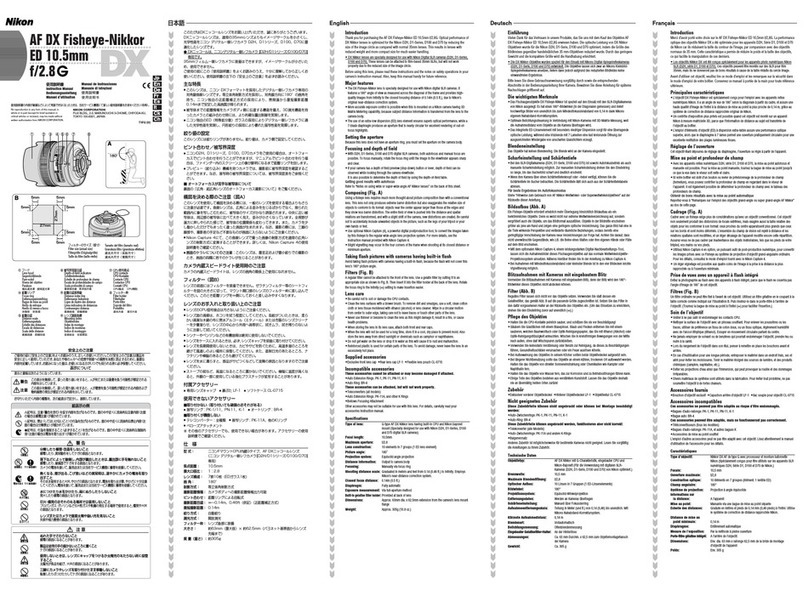
Nikon
Nikon AF DX Fisheye-Nikkor 10.5mm f/2.8G ED User manual
Popular Camera Lens manuals by other brands
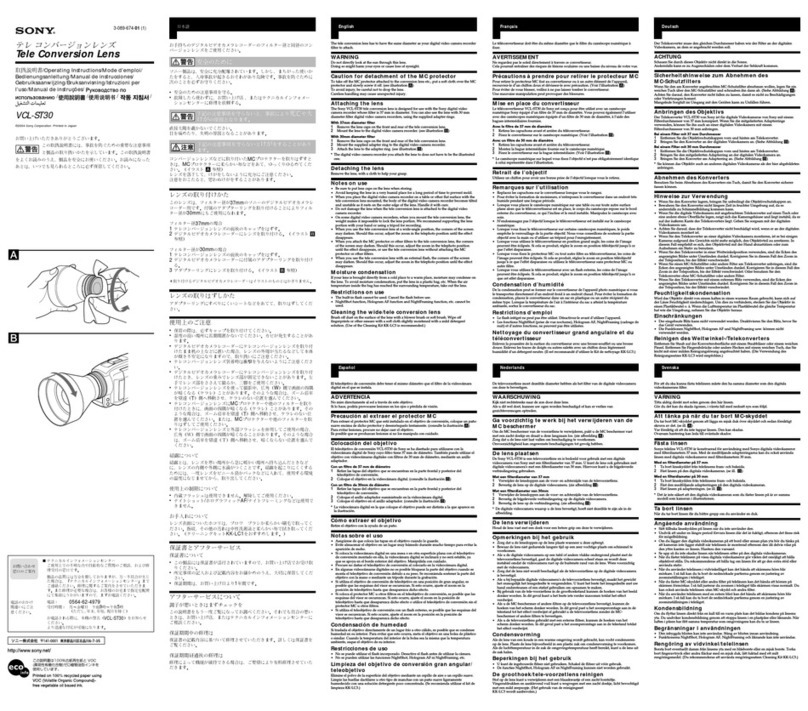
Sony
Sony VCL-ST30 operating instructions

Canon
Canon FD 35 - 70 mm instructions
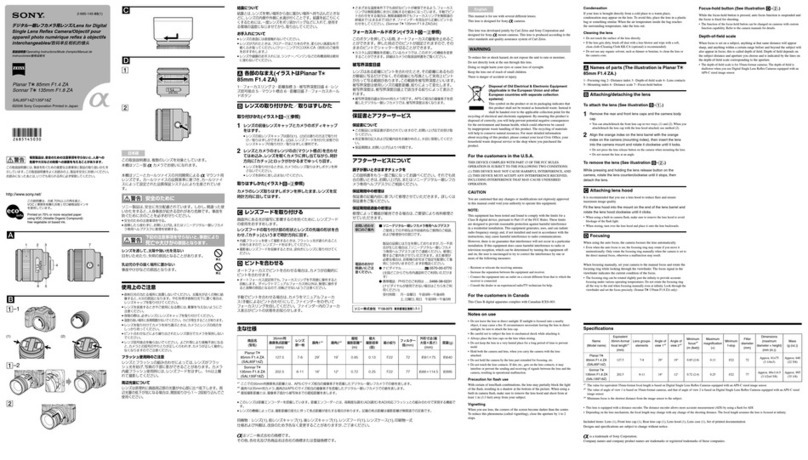
Sony
Sony SAL-85F14Z - 85mm f1.4 Carl Zeiss Planar T Coated Telephoto... operating instructions

ARRI
ARRI Lenses brochure

Olympus
Olympus M.Zuiko Digital ES 300mm f4.0 IS PRO instructions

Sony
Sony VCL-DE07T operating instructions

